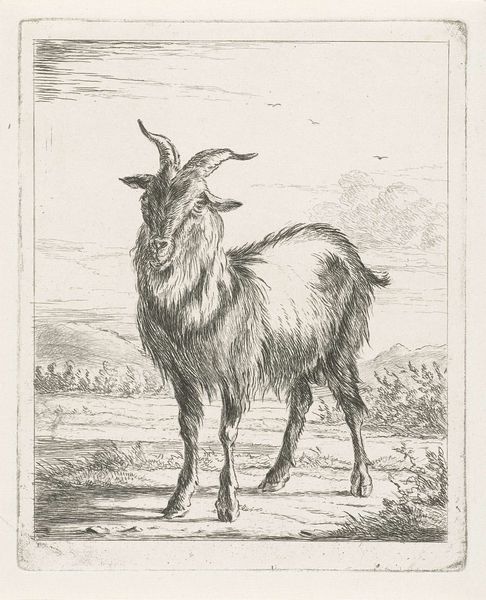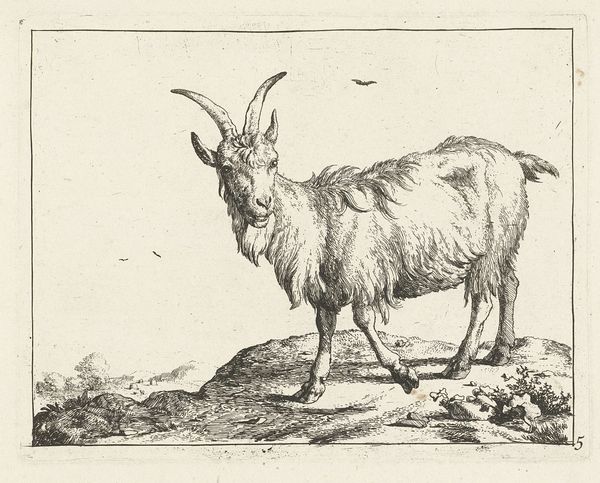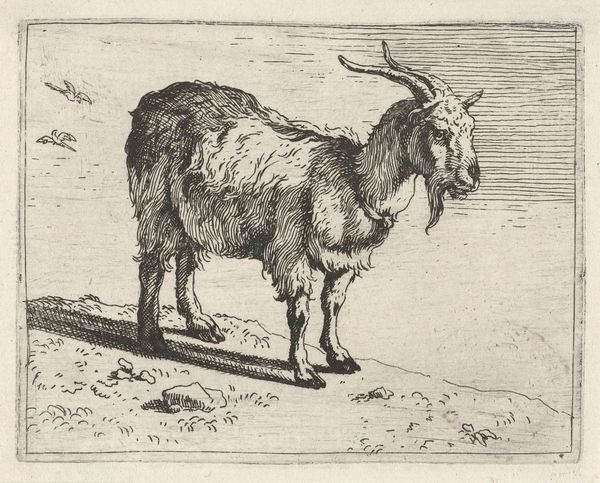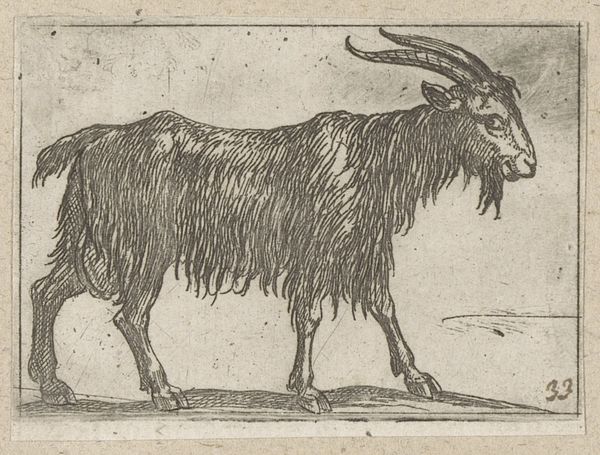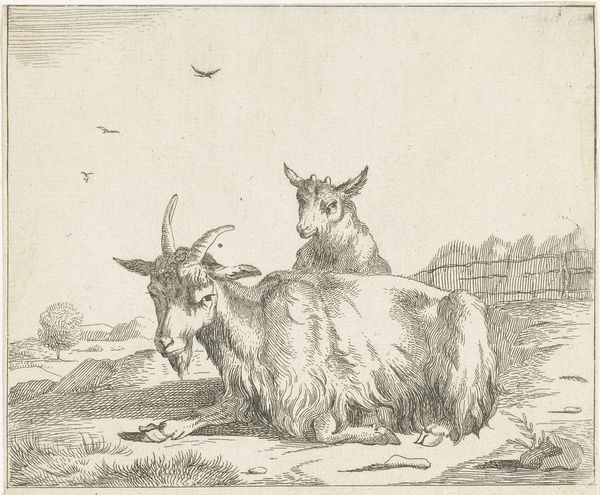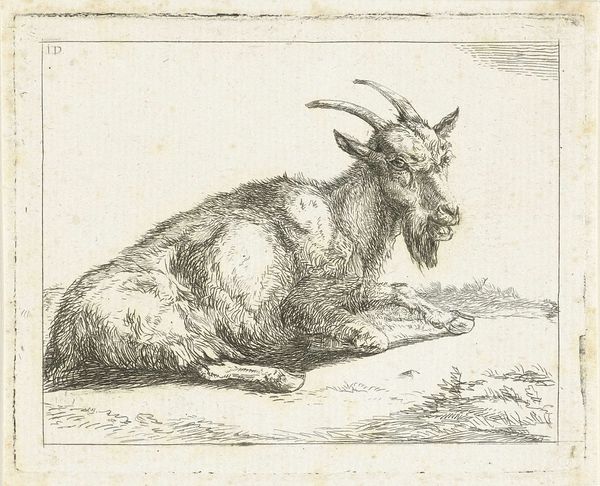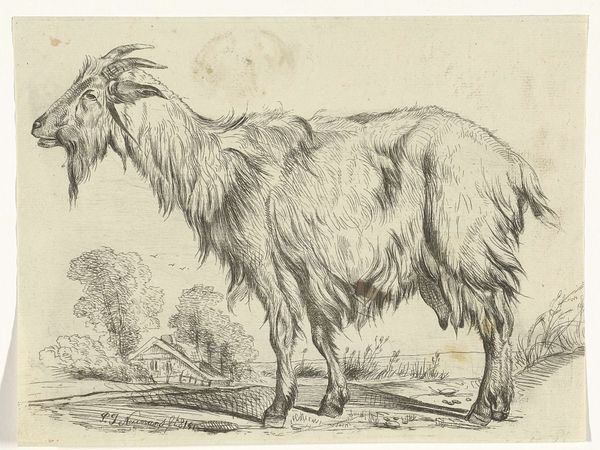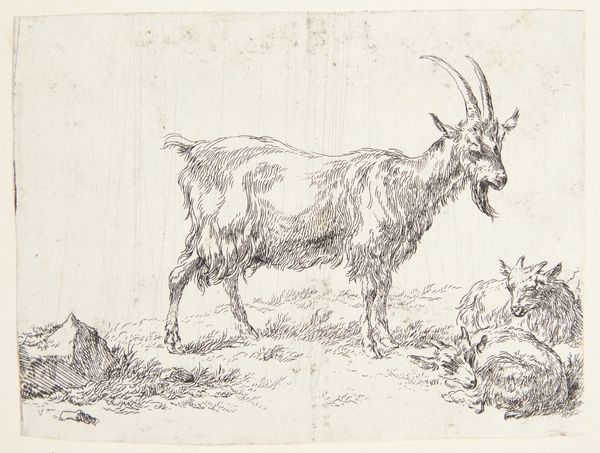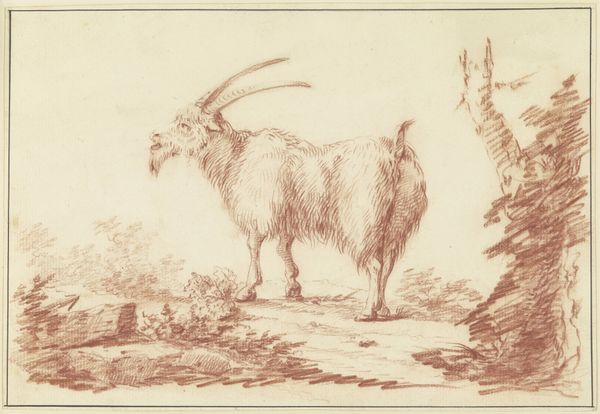
print, engraving
#
animal
# print
#
landscape
#
engraving
#
realism
Dimensions: height 137 mm, width 112 mm
Copyright: Rijks Museum: Open Domain
Curator: Let’s consider this work, Staande geit, or Standing Goat, dating from 1851, by Jacobus Cornelis Gaal. It's currently housed right here at the Rijksmuseum, and rendered as a delicate engraving. Editor: My first thought? That goat looks a bit scruffy but in a dignified way. Almost like a tired old farmer after a day’s labor, but somehow…regal. Curator: I agree! The realism is palpable. What's particularly interesting is that in 1851, prints like these were very affordable, so people who otherwise couldn’t access images or artworks could buy it or things like it. Editor: Definitely. You can really see the textures: the shagginess of its coat, the worn landscape, and the almost laborious, painstaking detail etched into the plate. One wonders how many impressions were pulled, and how much it contributed to Gaal’s income and reputation? How accessible would these engravings be today? Curator: It’s also tempting to imagine the context: what inspired Gaal to capture this specific goat? What stories could it tell? A goat stands patiently under an empty sky. This engraver saw some type of message about the resilience of life. He used art materials, a grounded vision, and simple rendering to capture that reality and leave the goat’s soul intact on paper for over a century! Editor: A lovely thought, though I wonder about idealization. Maybe this image subtly romanticized rural labor and animal husbandry for a growing urban middle class… like a goat postcard! It seems we both end up with similar conclusions by entirely different paths. Curator: Absolutely. From goats to gears. Each method helps uncover another face.
Comments
No comments
Be the first to comment and join the conversation on the ultimate creative platform.
